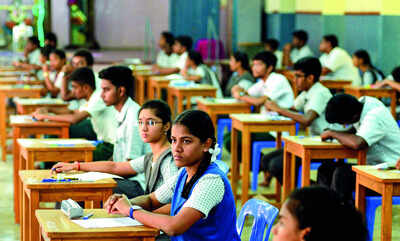India’s school rooms are starting to replicate the rustic’s demographic shifts. In step with new knowledge from the Unified District Knowledge Machine for Training Plus (UDISE+)general faculty enrolment has dropped to a seven-year low of 24.68 crore in 2024–25, registering a fall of eleven lakh scholars in comparison to the former 12 months. Probably the most vital decline used to be on the main point (Categories 1–5), the place enrolment shrank through just about 34 lakh scholars.Whilst overall enrolment has been declining often since 2021–22, this 12 months’s dip has been formally connected, basically, to India’s falling delivery price, a development that demographers were caution of for years.
Falling fertility, shrinking school rooms
Senior officers within the Union Ministry of Training mentioned the decline is “basically because of falling delivery charges, aside from in a couple of states.” India’s Overall Fertility Charge (TFR) fell to at least one.91 youngsters in line with lady in 2021, under the substitute point of two.1. This marks the primary time the fertility transition has visibly translated into fewer youngsters getting into the varsity machine.A senior reputable defined that calculations such because the Gross Enrolment Ratio (GER) are nonetheless according to the 2011 Census, which inflates the denominator in present projections. “As soon as the brand new Census knowledge is to be had in 2026, many of those figures are prone to trade,” the reputable mentioned.The fad used to be expected. A 2022 Nationwide Council of Instructional Analysis and Coaching (NCERT) learn about had already projected a fall in enrolments through 2025, bringing up a shrinking inhabitants within the 6–16 age team.
Beneficial properties at upper ranges, however main enrolment dips sharply
The UDISE+ knowledge displays that whilst main enrolment has fallen from 10.78 crore in 2023–24 to ten.44 crore in 2024–25, different segments have registered beneficial properties. Pre-primary, higher main (Categories 6–8), secondary (Categories 9–10), and better secondary (Categories 11–12) noticed a gentle building up in pupil numbers.This asymmetric trend suggests fewer new entrants however more potent continuation amongst older cohorts. It additionally displays India’s broader demographic construction: As the bottom narrows, higher ranges keep growing quickly because of previous, better delivery cohorts nonetheless shifting in the course of the machine.
Govt vs personal faculties: Contrasting tendencies
The shift may be institutional. Govt faculty enrolment fell sharply from 12.75 crore to twelve.16 crore, a decline of about 59 lakh scholars. By contrast, personal faculties noticed a surge, emerging from 9 crore to 9.59 crore, including just about 60 lakh scholars.The close to mirror-image shift highlights the rising choice for personal education, at the same time as general pupil numbers decline. For policymakers, the problem is two-fold: Managing shrinking cohorts whilst addressing the exodus from executive faculties.
Dropout charges fall, retention improves
The decline in new enrolments is tempered through one encouraging development: Fewer scholars are leaving the machine. Dropout charges throughout Preparatory (Categories 3–5), Heart (Categories 6–8), and Secondary (Categories 9–10) ranges fell considerably between 2023–24 and 2024–25.
- Preparatory: From 3.7% to two.3%
- Heart: From 5.2% to a few.5%
- Secondary: From 10.9% to eight.2%
Retention has stepped forward around the board — 98.9% on the Foundational point, 92.4% on the Preparatory point, and 82.8% on the Heart point. On the Secondary point, the place dropouts have traditionally been prime, retention rose modestly from 45.6% to 47.2%.The ministry credit this growth to focused interventions, together with the growth of secondary faculties and projects to stay scholars engaged.
Regional contrasts: Southern states see sharper declines
State-level knowledge finds a blended image. Uttar Pradesh and Assam registered modest will increase in enrolment, whilst a number of states within the south and west reported declines.
- Bihar: Down from 2.13 crore to two.11 crore
- West Bengal: Down from 1.80 crore to at least one.71 crore
- Maharashtra: Down from 2.14 crore to two.13 crore
The steepest falls have been within the south:
- Andhra Pradesh: 87.42 lakh to 84.55 lakh (–2.89 lakh)
- Kerala: 62.82 Lakh to 61.64 Lakh (–1.18 Lakh)
- Tamil Nadu: 1.30 crore to at least one.25 crore (–0.48 lakh)
- Karnataka: 1.19 crore to at least one.18 crore (–0.14 lakh)
The focus of declines in southern states aligns with their decrease fertility charges, one of the vital lowest within the nation.
Coverage implications: From getting old to political illustration
The information has stirred wider conversations on India’s demographic long term. On the NITI Aayog governing council assembly in 2023, High Minister Narendra Modi prompt states to arrange demographic control plans, caution of the demanding situations of inhabitants getting old.This July, Andhra Pradesh Leader Minister N. Chandrababu Naidu went additional, pronouncing plans for a coverage to inspire households to have extra youngsters, arguing that consistently low fertility may just impact the state’s long term illustration in Parliament.
What the numbers sign
India’s faculty enrolment tale is not almost about get right of entry to or infrastructure, it’s about demographics. A falling delivery price, as soon as noticed in large part as a marker of monetary and social growth, is now reshaping school rooms.The anomaly is stark: Fewer youngsters are getting into faculties, however the ones already inside of are staying longer. As the bottom narrows and higher ranges proceed to increase quickly, India will wish to recalibrate its training making plans, managing each the standard of education and the asymmetric geography of demographic trade.(with PTI inputs) TOI Training is on WhatsApp now. Apply us right here.

